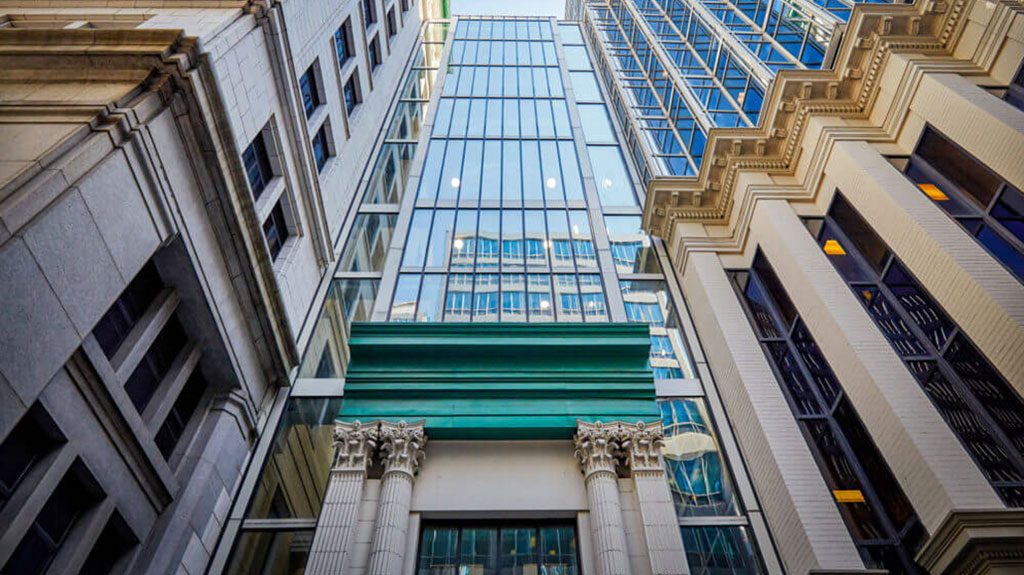The building retrofit bundling program of the Canada Infrastructure Bank (CIB) has gone from a kernel of an idea to a rapidly expanding investment sector in just a year-and-a-half.
Large-scale building retrofits were introduced as part of the CIB’s Growth Plan in October 2020, with $2 billion set aside to help move the carbon-drenched buildings sector closer to net-zero emissions and meet government climate change goals.
Last month CIB CEO Ehren Cory outlined three retrofit partnerships representing more than $300 million in CIB spending where projects are to be bundled together with retrofits to be undertaken by a single property owner, as is the case with the Dream Retrofits initiative, or funding is to be allotted to providers of turnkey retrofit solutions who will go out and solicit customers.
The SOFIAC Retrofits program and the Johnson Controls OpenBlue Net Zero Buildings as a Service initiative fall into the latter category.
The Toronto Western Hospital Retrofit initiative has also been announced and in addition the City of Edmonton is currently working with the CIB to explore deep energy retrofits of city-owned buildings.
Other programs will be announced soon, said Frederic Bettez, the CIB’s managing director of investments.
“It is one of our stated goals to transform the market so that others pick up the slack,” Bettez explained recently.
“In all cases we want to promote first and foremost efficiency, reduction in energy consumption. That’s an overarching goal of all the projects we have looked at.”
The CIB’s retrofit program contains public and private buildings streams.
Dream will be receiving $136.6 million to finance 19 retrofits of commercial buildings built between 1875 and 1992 under the latter stream.
Dream’s plan, announced last fall, is focused on implementing energy efficiency measures, primarily mechanical and electrical upgrades, new windows and roofs, electric vehicle chargers and rooftop solar.
The financing package for SOFIAC will see the CIB lending up to $100 million and Fiera Private Debt up to $60 million. Other partners in the program are Fondaction, which will invest up to $30 million in share capital, and the Quebec Ministry of Energy, which is granting a subsidy of $5.5 million.SOFIAC is seeking commercial, industrial and multi-unit residential building owners for its retrofit solutions package.
In the deal with Johnson, the CIB is investing up to $100 million towards renovations of commercial, industrial, manufacturing and multi-residential buildings.
Bettez said the CIB is letting the market dictate how firms will reach the targets the bank has laid out.
“The way we structured our initiative is to set goals for our clients, i.e. reduce GHG emissions, and give them a means to do that through the financing solution. But how they’re going to do it, we want to leave that to the private sector or the promoters because everybody has a specialty, everybody has an idea.
“Some companies say, ‘hey, I’m going to target the retail sector and we’re going to go through efficiency and fuel switching,’ another one might say, ‘I’m going to target the industrial sector and go through onsite generation and storage.’”
The bundling of projects saves the CIB a lot of time and energy said Bettez. SOFIAC will go out and find a project that fits a template determined in advance and the CIB then contributes the funding.
“Anytime they find a new project that meets those criteria, we say, ‘OK you can borrow the money for that one,’” he said. “And so that’s where the template solution we have takes all its power.”
The CIB is involved in the retrofit sector to fill risk gaps that inhibit lenders, Bettez said – the bank helps the financial market overcome a fear of the unknown.
The program also helps the market overcome fragmentation, Bettez added, and incorporates a new level of standardization, with IT platforms introducing standardized reporting of energy savings, for example.
Fourthly, the CIB pushes for deeper retrofits than the market would otherwise consider.
“This is where we can sweeten the deal and give them a better interest rate to go a little deeper,” he said. “It’s a combination of these things together that makes this a success.”
He said the private sector is increasingly showing a willingness to take on a larger share of the financing.
“That’s the trend that we expect to pick up speed,” said Bettez.
Follow the author on Twitter @DonWall_DCN.








Recent Comments
comments for this post are closed